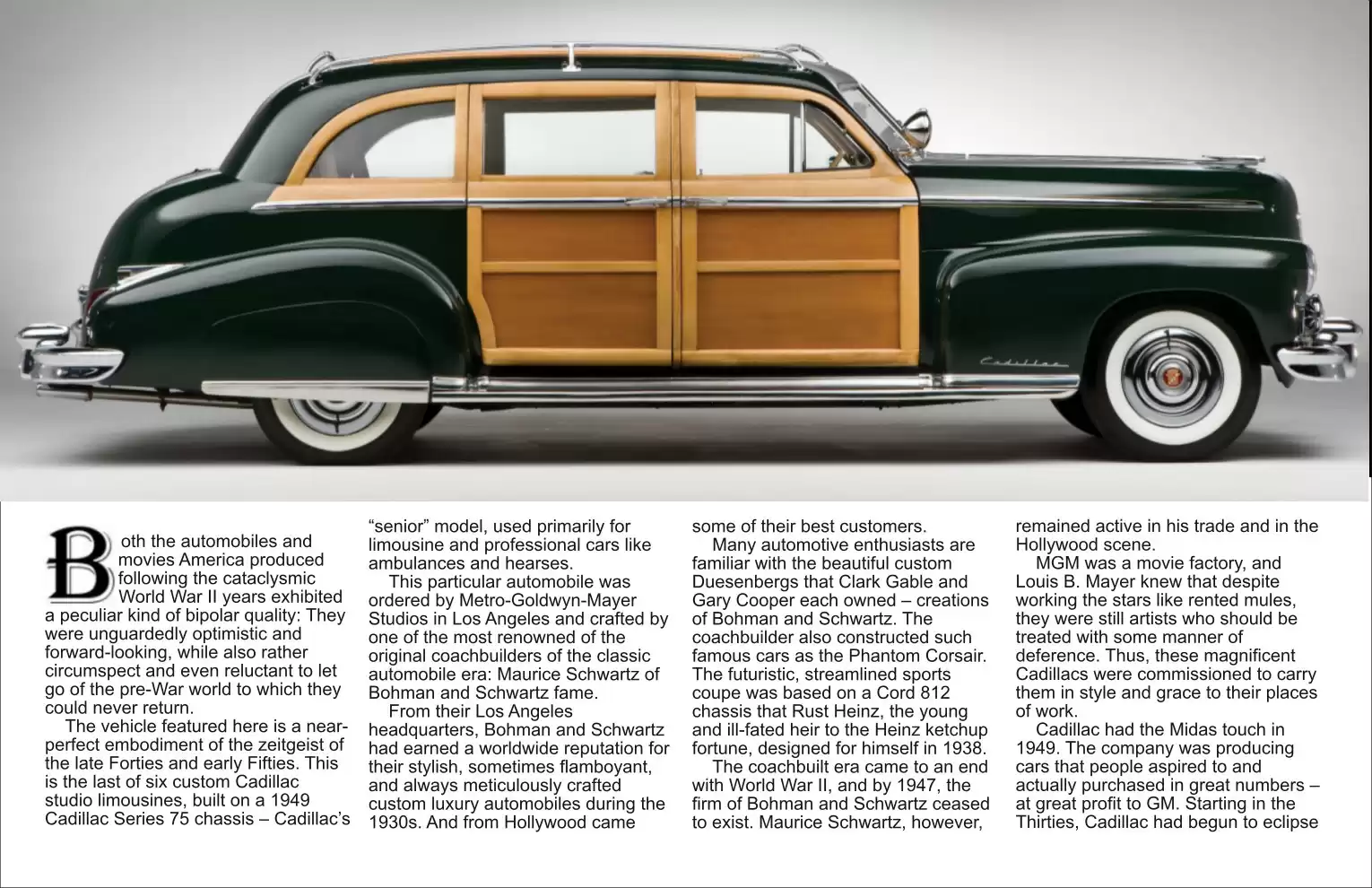
Both the automobiles and movies America produced following the cataclysmic World War II years exhibited a peculiar kind of bipolar quality: They were unguardedly optimistic and forward-looking, while also rather circumspect and even reluctant to let go of the pre-War world to which they could never return.
The vehicle featured here is a near-perfect embodiment of the zeitgeist of the late Forties and early Fifties. This is the last of six custom Cadillac studio limousines, built on a 1949 Cadillac Series 75 chassis--Cadillac's "senior" model, used primarily for limousine and professional cars like ambulances and hearses.
This particular automobile was ordered by Metro-Goldwyn-Mayer Studios in Los Angeles and crafted by one of the most renowned of the original coachbuilders of the classic automobile era: Maurice Schwartz of Bohman and Schwartz fame.
From their Los Angeles headquarters, Bohman and Schwartz had earned a worldwide reputation for their stylish, sometimes flamboyant, and always meticulously crafted custom luxury automobiles during the 1930s. And from Hollywood came some of their best customers.
Many automotive enthusiasts are familiar with the beautiful custom Duesenbergs that Clark Gable and Gary Cooper each owned--creations of Bohman and Schwartz. The coachbuilder also constructed such famous cars as the Phantom Corsair. The futuristic, streamlined sports coupe was based on a Cord 812 chassis that Rust Heinz, the young and ill-fated heir to the Heinz ketchup fortune, designed for himself in 1938.
The coachbuilt era came to an end with World War II, and by 1947, the firm of Bohman and Schwartz ceased to exist. Maurice Schwartz, however, remained active in his trade and in the Hollywood scene.
MGM was a movie factory, and Louis B. Mayer knew that despite working the stars like rented mules, they were still artists who should be treated with some manner of deference. Thus, these magnificent Cadillacs were commissioned to carry them in style and grace to their places of work.
Cadillac had the Midas touch in 1949. The company was producing cars that people aspired to and actually purchased in great numbers--at great profit to GM. Starting in the Thirties, Cadillac had begun to eclipse
| Previous Page | Next Page |